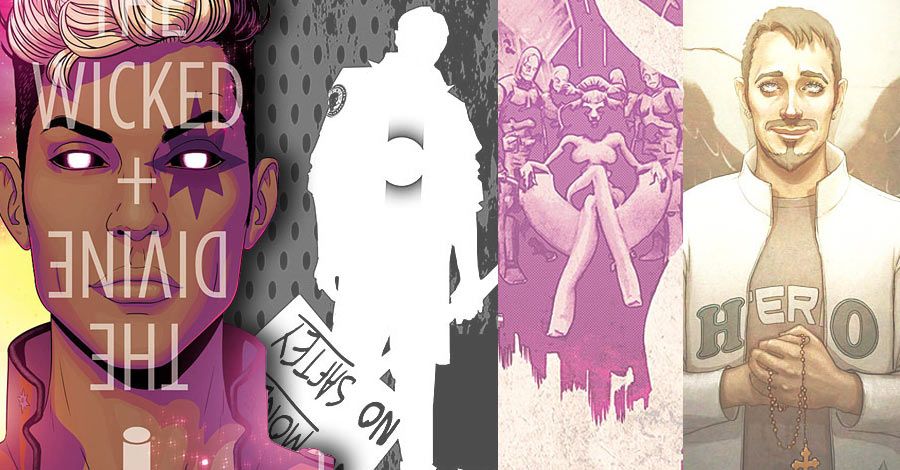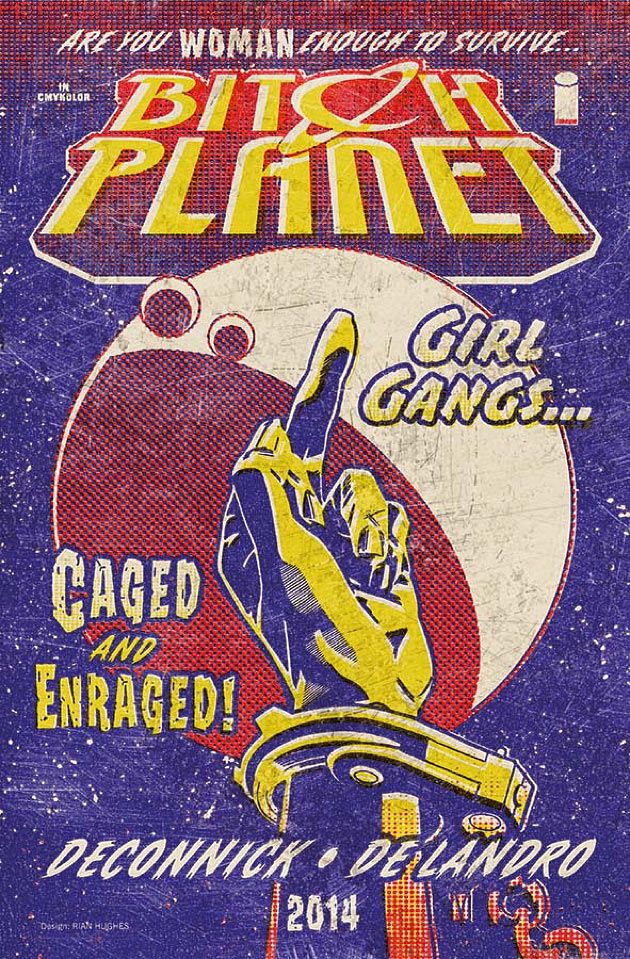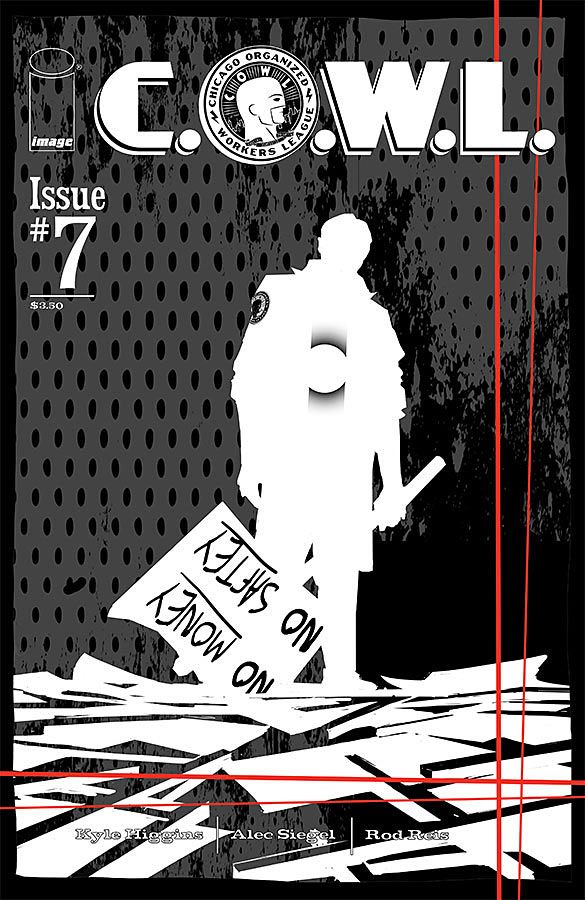On Thursday afternoon at New York Comic Con, David Brothers led a panel of Image creators in a discussion of what it takes to make comics that immerse the reader in the world of the story. "When you're reading good comics," Brothers said, "while you're reading the comic, that comic is the only thing that exists to you. You fall into that world and everything is completely real." The panel included "The Thrilling Adventure Hour" writers and co-creators Ben Acker and Ben Blacker, "Pretty Deadly" writer and co-creator Kelly Sue DeConnick, "The Wicked + The Divine" artist and co-creator Jamie McKelvie, "Rocket Girl" writer and co-creator Brandon Montclare, "Revival" writer and co-creator Tim Seeley, "Southern Bastards" artist and co-creator Jason Latour, and "C.O.W.L." co-creator Kyle Higgins.
Acker and Blacker showed first covers for two new series from Image Comics based on recurring segments from their podcast: Space western series "The Thrilling Adventure Hour Presents... Sparks Nevada: Marshal on Mars," and a series that follows two socialites' encounters with the paranormal, "The Thrilling Adventure Hour Presents... Beyond Belief." Their worldbuilding focus for the panel was to expand the developed world of the podcast into a visual space. Blacker said that he sees comics as "a chance to add a visual element" to the stories. Both titles are due out in February 2015. The comics will feature new stories rather than adaptations of favorite episodes.
"The Thrilling Adventure Hour" started as a stage show in 2005 and has been a podcast on the Nerdist network since 2011. Blacker said that the comics and podcast co-exist easily: "There will be lots of ways to consume these characters." About the similarities between working in an audio format and working in comics, Acker said, "the collaboration we've found with artists tends to resemble the collaboration we have with the actors that do the show, because they're interpreting the words that we write."
Higgins showed a cover for issue #6 of "C.O.W.L.", which will be done as a one-shot in the style of a 1962 comic, contemporary with the events of the series. Due out in November, the issue will present the origin story of the Gray Raven, though Higgins warned that it might not be an entirely truthful portrayal. The issue will be fully immersive into the world of the story, containing 1962-style advertisements for other Image books. Higgins also showed an album cover for "The C.O.W.L. Sessions," a soundtrack album of period music composed by Joe Clark. Releasing through Sparks & Shadows, "The C.O.W.L. Sessions" will be available as a digital download on October 28, the day before the release of the first "C.O.W.L" trade paperback.
While Higgins is developing the world of "C.O.W.L." by producing artifacts from the story, McKelvie focused on the details in his artwork for "The Wicked + The Divine." Brothers pointed out the characters' clothes as one of his favorite parts of "The Wicked + The Divine" because their outfits look realistic. McKelvie said that fashion is "incredibly important" to his process. "Because you've got this fantastical element, I feel like the real elements need to feel real. So the locations are real places, and the outfits are real." McKelvie also said that, "I think it's very important as well for characters to have their own style," because the visual medium allows for characters' clothing choices to reveal aspects of their personalities."
Seeley, DeConnick, Montclare and Latour discussed how their experiences and memories had shaped their worldbuilding processes, with Seeley explaining that his series "Revival" was set in his home town. "A lot of the inspiration for the series came from, if you grew up in a small town, especially in the Midwest, you were often exposed to some really weird shit." The establishment of a realistic setting was important, Seeley said. "I think that horror works best when you feel comfortable in all the other ways, so that the discomfort is really the horror element."
While many of the panelists' series dealt with fantastical elements based in the real world, DeConnick's "Pretty Deadly" takes place in "myth space." "I wanted it to be a straight Western when we started," DeConnick explained, "but it's a story told by a dead bunny to a butterfly, which is somewhat fantastical."
For the 80's aesthetic of "Rocket Girl," Montclare said "A lot of it falls on the artist." More than specific references, the memory and aesthetic of the period is important for the series. "For about a quarter of the story, it takes place in an alternate version of 2014, which is very high tech. But it's basically the '80s version of the future, so even when you're doing the part that isn't based in reality, it's kind of based on what science fiction in the 80's projected."
About the setting for his "Southern Bastards," Latour joked "How much is there a modern day Alabama?" Although he is not from Alabama, Latour did grow up in the South. "Authenticity is kind of an illusion to begin with," he said, "basically you're recalling your memory of a place and you're arbitrating that with the needs of the story." He called "Southern Bastards" a "hyper-real" story rather than a realistic one.
Once the panel was opened to questions from the audience, the discussion turned to the writing process. While developing the world of the story is fun, "Having to actually write your book is scary," said DeConnick. "I will take every opportunity given me to avoid actually having to do the writing." Though she considers writing to be less fun than worldbuilding, DeConnick encouraged writers to put their worlds on the page, saying, "It is so much better to have an imperfect book than a perfect idea."
"Some of the best worldbuilding comes out of plotting," Higgins added.



